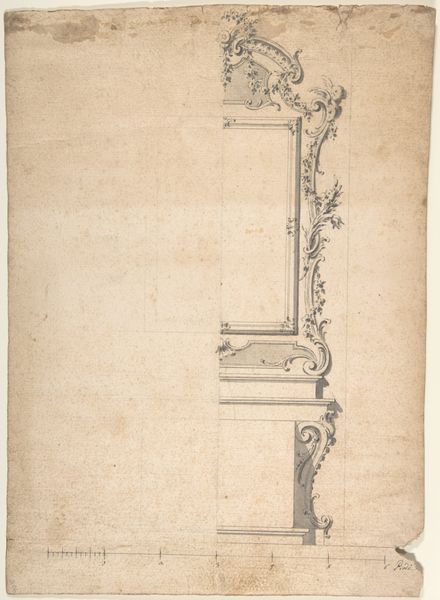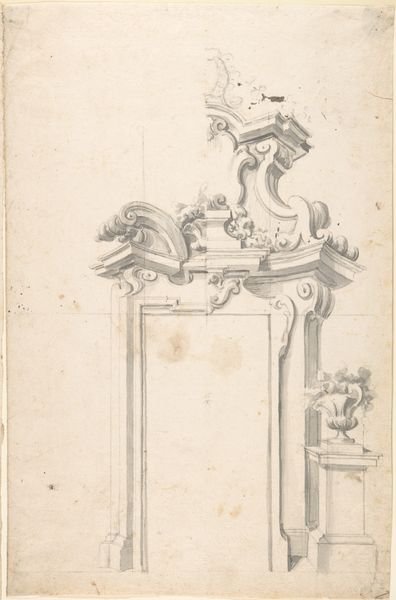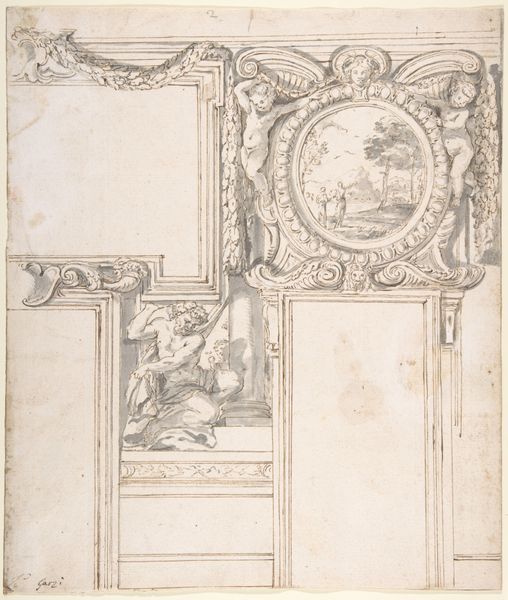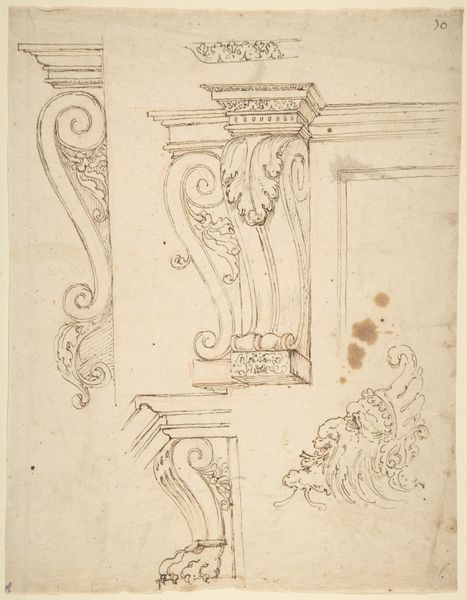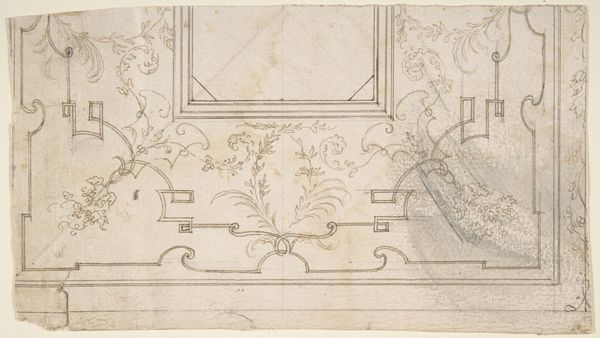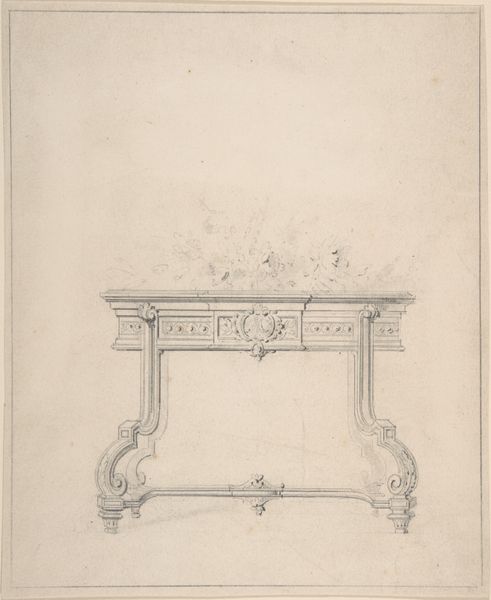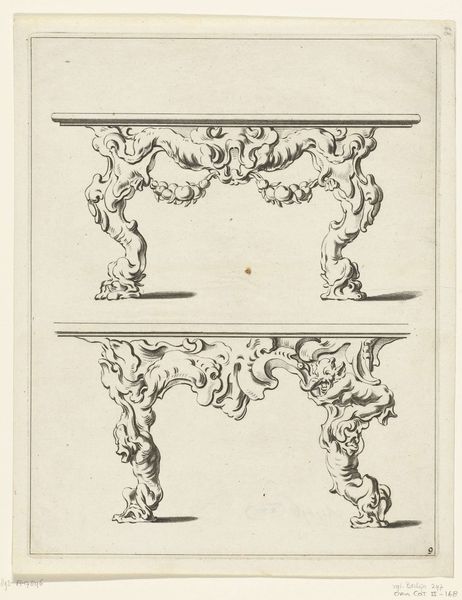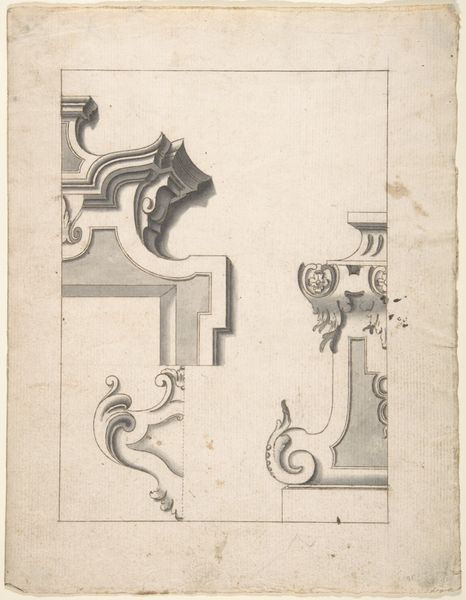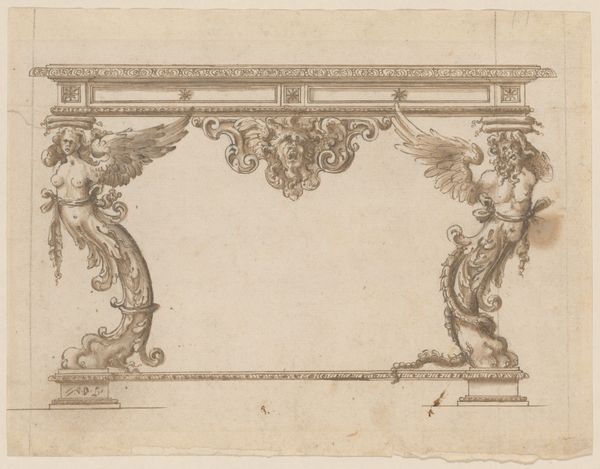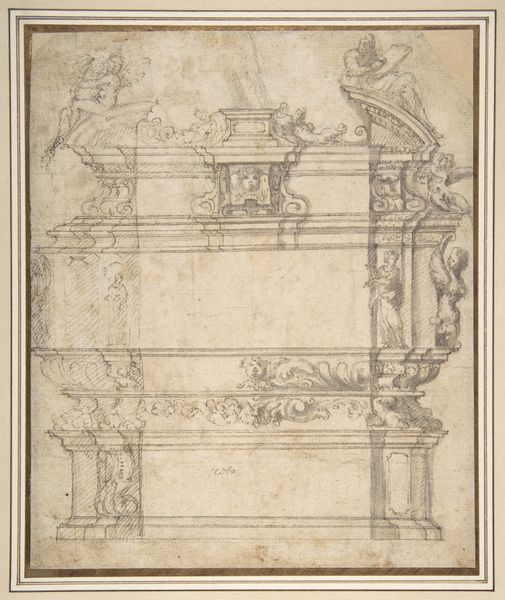
drawing, print
#
drawing
#
toned paper
#
light pencil work
#
face
# print
#
pencil sketch
#
personal sketchbook
#
ink drawing experimentation
#
pen-ink sketch
#
sketchbook drawing
#
watercolour illustration
#
sketchbook art
#
watercolor
Dimensions: sheet: 6 5/8 x 6 3/8 in. (16.8 x 16.2 cm)
Copyright: Public Domain
Curator: Here we have a work entitled "Design for a Table," an intriguing piece executed by Giovanni Battista Natali III, sometime between 1698 and 1765. It is currently held here at the Metropolitan Museum of Art. Editor: My initial thought is how ghostly it looks. The light pencil work against the toned paper gives it a very ethereal, almost melancholic feel, despite being a design for something as functional as a table. Curator: That lightness, I think, comes from it being a design rather than the finished product. It allows us to focus on the craftsmanship envisioned. You see how the materiality is suggested—the potential wood grain, the proposed finish? This drawing gives us access to the labor that would have been required to transform this vision into reality. Editor: I am drawn to the faces carved into the supports. They almost seem to be holding up the weight of the table, like figures from ancient mythology burdened with the world. The face speaks to power and status. Is the table then a symbol of aristocratic display and domination? Curator: Quite possibly. Consider who this table was meant for. It was likely destined for a home where displays of wealth and status were common, thus affecting who had access to its labor and final commodity. A beautifully rendered object with complex social connections, to be sure. Editor: Yes, and seeing those recurring floral and shell motifs around the curves further highlights that era’s symbolic language; an embrace of nature, yet sculpted and controlled for aristocratic consumption. The cultural memory embedded within these images speaks volumes about 18th-century values. Curator: Indeed, it makes you think about the skill required not just in rendering this design, but in executing the physical object. What types of tools, workshops, apprenticeships, would all come together to produce this single commodity? The drawing then only gives us a sliver of insight into all the people involved. Editor: Looking again at those faces, it seems there is an almost tragic recognition in them. Perhaps the table as a design represents an unsustainable hierarchy… Anyway, that’s only my subjective reading based on symbols. Curator: Fascinating perspective. For me, the object becomes interesting by appreciating the networks involved to take a design like this from a drawing, such as this example, to material object to a lived experience within a very select section of society. Editor: Thinking about those melancholic faces, I'm grateful for Natali’s artistry, which enables this glimpse into past cultures. Curator: And by reflecting on the labor of its production, the drawing presents connections to material realities that far exceed aesthetic appreciation.
Comments
No comments
Be the first to comment and join the conversation on the ultimate creative platform.

